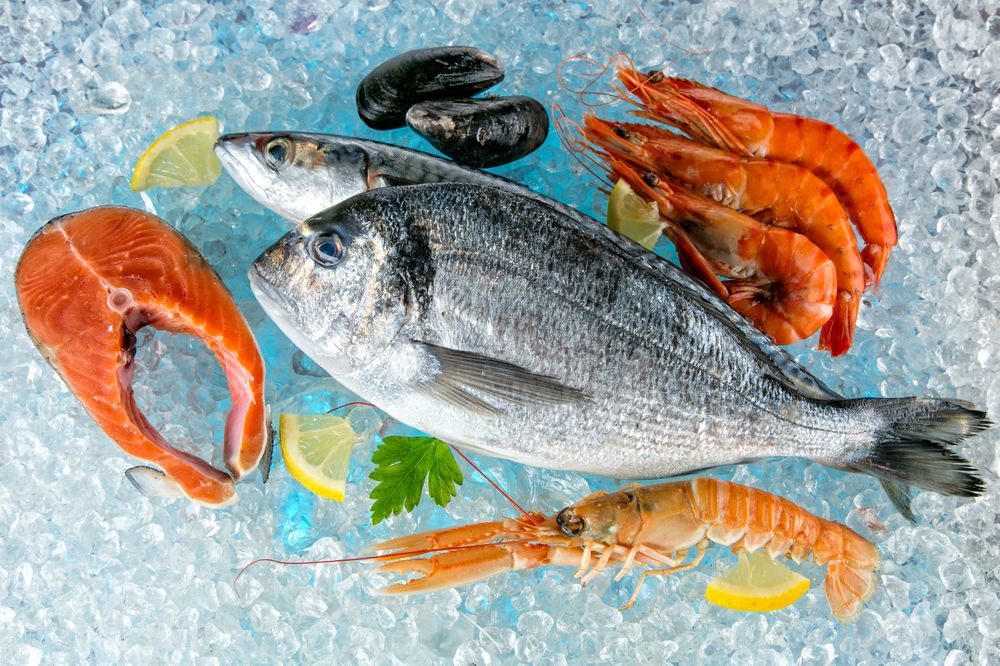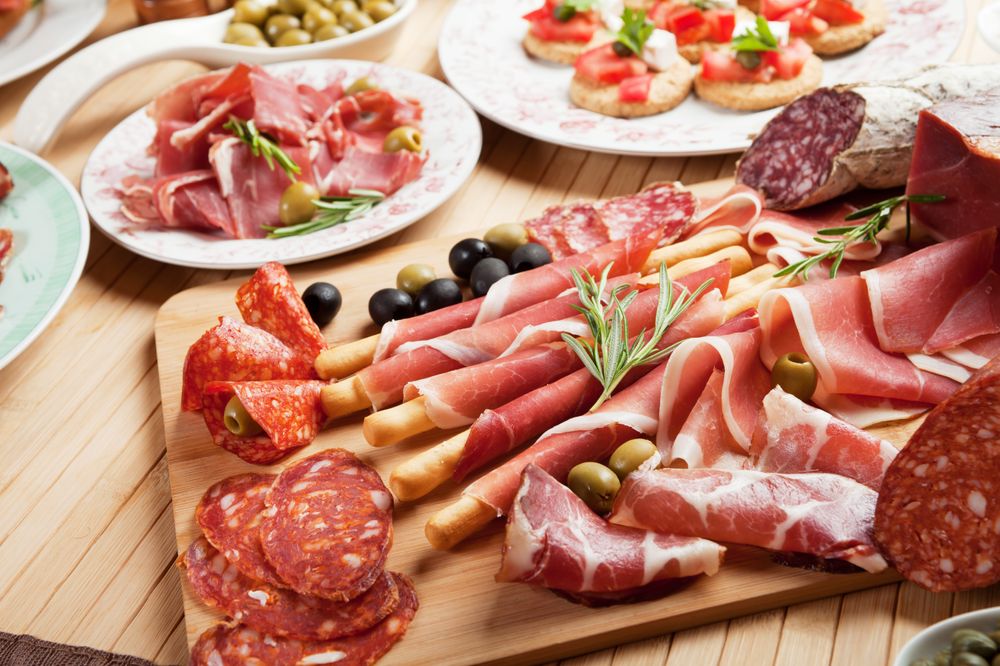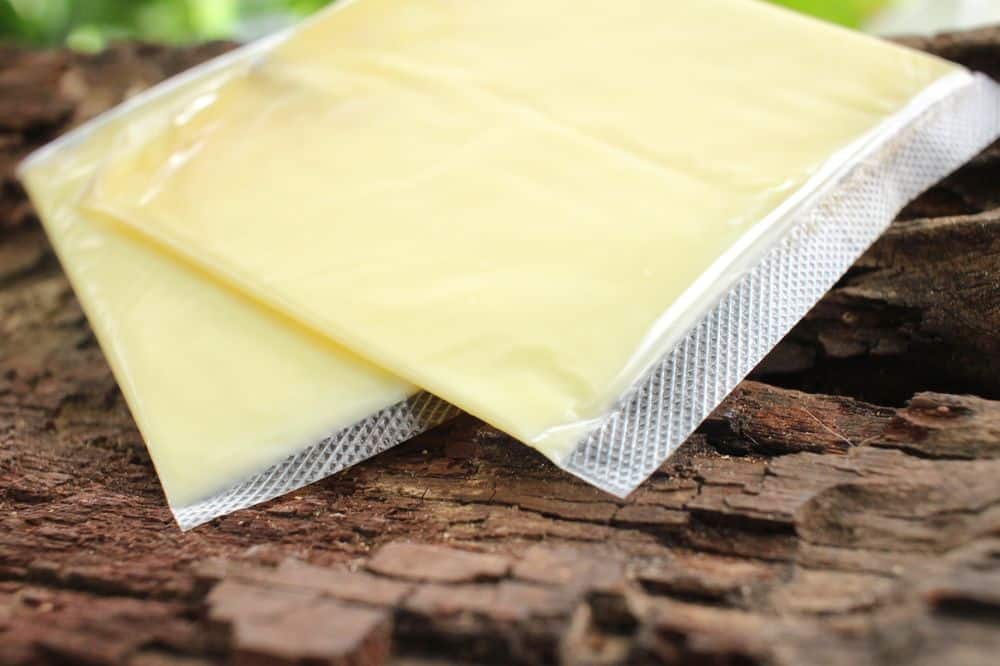Sodium is present in almost everything you eat and drink. It may be present naturally in various foods or supplemented with many foods during production.
The most common form of sodium that we consume in our daily lives is salt, 40% sodium and 60% chloride. People use it in both home and restaurant cooking as a flavouring ingredient.
For a long time, salt has been associated with hypertension, which causes damage to the blood vessels and arteries when persistently increased. As a result, your chance of developing cardiovascular disease, stroke, heart failure, and renal disease rises.
Several health organisations have issued recommendations for salt restriction. However, these recommendations have generated controversy since not everyone benefits from a low-sodium diet. Nevertheless, it is a critical mineral our body requires for various vital processes. It is naturally available in eggs and vegetables and is a significant salt element (sodium chloride).
While sodium is necessary for health, specific conditions demand its restriction.
Importance of Sodium
Sodium is an electrolyte, a mineral that produces electrically charged ions.
The majority of sodium in your body is present in the veins. However, it is also in fluids around your cells. Sodium maintains the equilibrium of these fluids.
Sodium is critical for proper neuron and muscle function. It also regulates body fluid balance. Your kidneys contribute to sodium regulation in your body.
They do so by changing the quantity of sodium in your urine. Additionally, the body excretes sodium via perspiration (sweat).
Risks of Sodium
Sodium is an essential nutrient. Without it, the body cannot function. However, excess sodium can hamper the body’s regular functioning. Therefore, having a balanced amount of sodium is essential.
Risks with sodium usually arise in two ways; either too much or not enough. Both are equally risky.
Low Sodium (Hyponatremia)
Studies suggest that restricting salt consumption has health complications.
According to research, those who eat less salt per day are more likely to develop heart diseases.
Reduced salt intake may also lead to an increased risk of mortality or hospitalisation.
Low salt intake may result in elevated LDL and triglycerides, metabolic syndrome, and hyponatremia. The symptoms include changed personality, fatigue, and disorientation. In addition, severe hyponatremia may result in convulsions, paralysis, and fatality.
Further, a lack of salt consumption causes several health problems. For example, studies show that low sodium is associated with insulin resistance. It is especially problematic for diabetic and pre-diabetic people.
High Sodium (Hypernatremia)
Our bodies require a modest quantity of sodium to keep it running smoothly. However, consuming too much salt raises blood pressure, a significant risk factor for heart disease and stroke.
When you’re suffering from hypernatremia, you will experience a lot of dehydration and thirst. Lethargy, a state of intense exhaustion and a lack of energy, and disorientation are symptoms. Muscle twitching and spasms may also occur. That is because sodium is crucial to muscles and neurons.
Since it retains extra fluid, sodium raises blood pressure, causing a strain on the heart. As a result, stroke, heart failure, osteoporosis, stomach cancer, and renal disease are all made more likely by excessive salt in the diet.
Sodium Rich Foods
Some foods will have more sodium than others. Therefore, excessive consumption of these will cause Hypernatremia. Hypernatremia is the condition where the body has excess sodium.
Here are 15 foods that are high in sodium.
1. Seafood
Adding seafood to a heart-healthy diet is an excellent choice. Seafood may help decrease cholesterol, which improves heart health when cooked healthily. Nevertheless, it is essential to choose your seafood carefully since alternatives such as shellfish and canned tuna fish contain excessive salt.
For example, some canned tuna and frozen shrimp contain more than 400 mg of salt per serving.
Fresh tuna, salmon, halibut, and haddock are among the best seafood options.
2. Vegetable Juice
As an easy method to receive your daily serving of fruits and vegetables, you may choose to drink vegetable juice. It may also be a source of natural salt. However, packed vegetable juices generally contain added salt, which means more sodium. Sodium can act as an excellent preservative.
It is recommended to have fresh vegetable juice to get a healthy amount of sodium. In addition, it may benefit you in several other ways.
3. Canned Veggies
Canned vegetables contain a significant amount of salt. However, draining and washing canned veggies for a few minutes may significantly lower their salt level by 9–23%. Therefore, you should prefer consuming fresh veggies. However, if you use canned vegetables, ensure that you clean them properly.
A 100 g serving of canned peas contains 250 mg sodium. Likewise, a 100 g serving of canned asparagus contains 700 mg sodium. These are 30-40% of the DV. Therefore, you should always choose fresh veggies for consumption.
4. Canned Meat
Like canned vegetables, canned meats also contain more salt content. For example, a 100 g serving of chicken and turkey can contain up to 500 mg sodium. However, canned beef and pork have a much higher sodium content. They have up to 1500 mg sodium in a 100 g portion.
A healthy alternative can be consuming home-cooked meat. It will give you enough protein and nutrients and will benefit your health.
5. Cured Meat
Cured meat contains added salt to retain flavour. Also, sodium is a natural preservative, meaning meat will last longer. But this results in excess sodium intake.
Meats like pork, bacon and sausages contain added salt to enhance flavour and add shelf life. For example, 100 g sausages have about 800 mg of sodium, nearly 35% of the DV.
Similarly, 100 g bacon contains around 850 mg sodium, and 100 g pork contains about 1500 mg sodium, almost 60% of the DV.
Such excessive sodium intake may harm you. Therefore, it is essential to refrain from consuming cured meat and instead choose home-cooked fresh meat.
6. Cottage Cheese
Cottage Cheese is a rich supplier of calcium. However, a 100 g serving of cottage cheese has about 300 mg of sodium, about 12% of the recommended daily amount.
The salt in cottage cheese makes the food taste better and helps it last longer. So, you won’t usually find low-sodium versions. Therefore, it is recommended to eat cottage cheese in moderation.
7. Processed Cheese
Processed cheeses typically have more sodium. It is made with salts that help ingredients stick together. A 100 g serving of processed cheese has 1400 mg sodium, more than 57% of the DV.
8. Pizzas & Sandwiches
Pizzas and sandwiches are popular fast foods. However, their preparation and cooking involve a lot of salt. That makes them high-sodium foods.
As a result, they are generally unhealthy to eat. For example, a 100 g store-bought pizza slice has over 700 mg sodium. Sandwiches offer a similar amount of sodium. A 6-inch sandwich could offer up to 1000 mg of sodium, nearly 50% of the daily value.
Now you know why nutritionists and healthcare experts recommend you cut down on the consumption of these foods. They do not offer any health benefits. Instead, they damage your body from within.
9. Soup
Canned, packaged, instant soups or soups cooked in restaurants often include a high salt content.
For example, the soup contains 250 mg sodium in a 100g portion. It is nearly 15% of the daily value. However, there are low-sodium varieties available in the market or best to opt for home made fresh soups to limit sodium intake.
10. Mac n’ Cheese
This popular comfort dish has a lot of sodium, primarily due to the salted cheese. For example, a 100g serving of this dish has nearly 350 mg of sodium. It is almost 20% of the daily value.
11. Sauces
You may use sauces to flavour dishes. You might usually find them with food servings or as an accompaniment on the table. However, salt contributes to the flavour, and excess may be harmful.
Soy sauce is one of the saltiest foods available. A 100 g serving has nearly 5500 mg of sodium. It is over 220% of the daily recommended value! In addition, barbecue sauce is also high in sodium. A 100 g portion of it has about 1400 mg of sodium, over 50% of the daily value.
Tomato sauce is also sodium-rich. For example, a 100 gm serving of tomato sauce contains nearly 600 mg of sodium. It is about 25% of the daily value.
12. Biscuits
Even though you find it delicious, this morning classic has a significant amount of salt. Researchers found packaged biscuits to have a high sodium content in a study.
Some contained nearly 800 mg of sodium in a single biscuit! Therefore, choose your morning delights carefully. You should avoid consuming too many salted biscuits as they may harm you significantly.
13. Salad Dressings
Salt contributes to a portion of the sodium in salad dressing. The average salt content in salad dressing is 1000 mg per 100 g serving, 40% of the daily value. However, you can quickly reduce this value.
For example, if you add less salt to dress the salad, the value goes down by 20%. Moreover, you can opt for simple yet tasty homemade dressings.
You can try different combinations of your choice from olive oil, lemon juice, vinegar, salt, pepper powder, fresh or dried herbs, mustard paste, etc.
14. Pudding
Although the pudding does not taste salty, the quick pudding mix contains a considerable amount of sodium. This sodium comes from the salt, and sodium-containing compounds, which thicken instant pudding to make it creamy.
For example, a 25-gram quantity of instant vanilla pudding mix generates a ½ cup serving and contains 350 mg of sodium. It is 15% of the recommended daily allowance.
15. Hot Dogs
A hot dog or bratwurst link has an average of 578 mg of salt, or 25% of the recommended daily intake. In contrast, the processed meat’s salt content varies from 230 to 1,330 mg per serving.
All these foods and their content suggest that you may discover lower-sodium alternatives if you read labels carefully.
Low Sodium Diet
While ignoring high-sodium foods is essential, it’s not the only practice that will help. Consuming low-sodium foods will help people limit their sodium intake.
Following are some low-sodium foods for a low sodium diet.
- Vegetables (greens, broccoli, cauliflower, peppers)
- Fruits (berries, apples, bananas, pears)
- Grains (dried beans, brown rice, farro, quinoa, and whole-wheat flour)
- Meat (chicken, turkey, beef, or pork)
- Fish (cod, sea bass, tuna)
- Eggs
- Healthy fats (Olive oil and avocado oil)
- Dairy (Milk, yoghurt, unsalted butter, and low-sodium cheeses)
- Bread (Whole-wheat, low-sodium tortillas)
- Unsalted seeds and nuts (pumpkin seeds, almonds, peanuts, etc.)
- Snacks unsalted popcorn, and unsalted tortilla chips.)
- Condiments (Vinegar, mayonnaise, low-sodium salad dressing, and low-sodium sauces.)
- Beverages (Tea, coffee, low-sodium vegetable juice, and water.)
- Dressings (Garlic powder, no-salt blends, herbs, and spices.)
A sodium-reduced diet may lower blood pressure in people with excessive levels. In addition, a high-salt diet increases the risk of stomach cancer. However, evidence for other advantages of sodium restriction is mixed.
For instance, although sodium restriction often helps to treat heart failure, further research indicates that sodium restriction may negatively affect patient health.
Therefore, some amount of sodium is necessary. However, it is imperative to ensure that a low-sodium diet contains the daily required value.
Summary
Many individuals consume far more sodium than the maximum daily limit of 2,300 mg. Additionally, your chance of getting salt-sensitive hypertension rises as you age. Therefore, it’s better to avoid processed, packaged, and restaurant meals to reduce salt intake in your diet. They often include hidden sodium.
Processed meats, such as ham, cold cuts, jerky, hot dogs, and sausage, contain a disproportionate amount of salt. Even unseasoned, frozen shrimp are often treated with sodium-laden chemicals.
Convenience foods, such as boxed potatoes, canned soup, instant pudding, meal helpers, pizza, frozen meals, and salty snacks such as pork rinds and pretzels, are also rich in sodium. Both high sodium and low sodium may cause dangerous health issues. Therefore, a balanced sodium intake is always recommended. Not more, not less.
Frequently Asked Questions (FAQs)
Q. What fruits and vegetables are high in sodium?
A. Apples, guavas, avocado, papaya, mango, carambola, pineapple, banana, melons, and pears contain natural sodium ranging between 1-8 mg per 100 grams. Celery, spinach, carrots and beets are vegetables that are rich in sodium. Generally, fruits and vegetables have low sodium.
Q. Are Bananas high in sodium?
A. No. On the contrary, bananas are low in sodium. Bananas contain 1 mg of sodium for every 100 g serving. That makes them great for a low-sodium diet.
Q. Is milk high in sodium?
A. Sodium is a natively occurring element in milk and is found in trace levels. 100 g of milk contains around 45 mg of sodium. It is less than 2% of the recommended daily intake (RDI) of sodium.
Q. Is there sodium in fresh tomatoes?
A. Yes. Tomatoes contain trace amounts of sodium. Fresh raw tomatoes contain about 5 mg of sodium in every 100 g portion.
Q. Are cucumbers high in sodium?
A. No. Fresh, unpeeled cucumbers have a low amount of sodium. For example, 100g of fresh cucumbers contain less than 2 mg of sodium. It is around 0.1% of the maximum daily intake
Q. Is there sodium in broccoli?
A. Yes. Although its value is not high, broccoli does contain sodium. For example, a 100 g portion of broccoli contains 36 mg of sodium.
Q. Is there a lot of sodium in yoghurt?
A. No. Sodium levels in yoghurt are generally low. Unflavoured and plain yoghurt contain about 36 mg of sodium in a 100 g serving. However, certain flavoured yoghurts contain added sodium because they have salt (for taste).
Q. Does eating salt increase sodium levels?
A. Eating salt does increase sodium levels. Salt is one of the most concentrated forms of edible sodium. As a result, salt consumption increases sodium levels in the body faster.
Q. What is the best source of sodium?
A. Although these foods are unhealthy, fast food like pizzas, burgers, and sandwiches contain a lot of added sodium. Meat options like ham and shrimp, and steak also include reasonable amounts of sodium. Unfortunately, there is no definitive best source of sodium. However, many different food items are suitable for increasing sodium levels.
Q. What can I drink to increase sodium?
A. Consume electrolyte replacement drinks such as Gatorade or Powerade. These beverages are electrolyte-rich and aid in replenishing sodium lost via perspiration. Additionally, some clear broths or soups might help you improve your hydration and salt consumption.
Q. What happens if sodium is low?
A. A low sodium level may be caused by excessive fluid intake, renal failure, heart failure, cirrhosis, and the use of diuretics. Hyponatremia may manifest itself in various ways, including changed personality, fatigue, and disorientation. Severe hyponatremia may result in convulsions, paralysis, and fatality.
Q. Can diabetics eat sodium?
A. While sodium does not cause diabetes, it may have a significant impact on the health of people who have prediabetes or diabetes. Individuals with or without diabetes should limit their intake to 2300 mg per day. The sodium consumption recommended for diabetics is the same for the regular populace.





